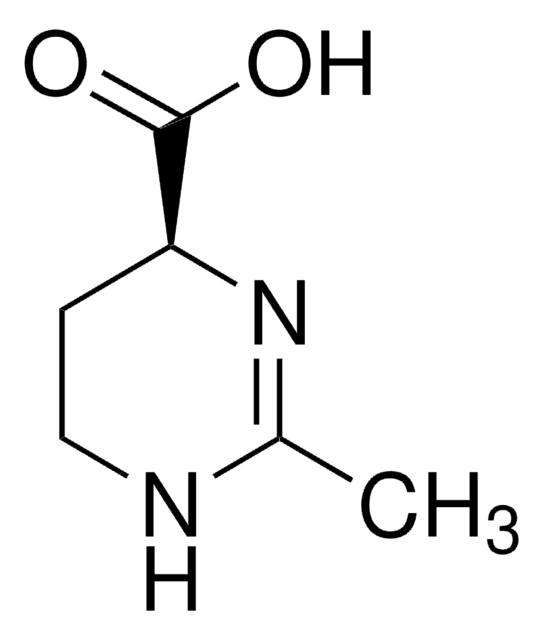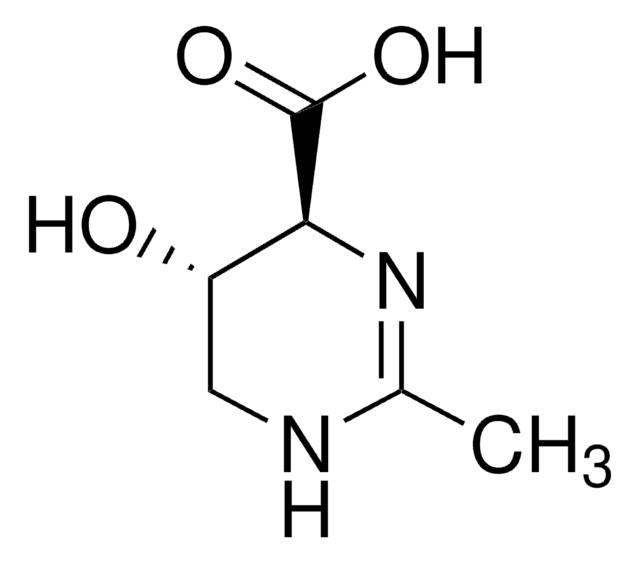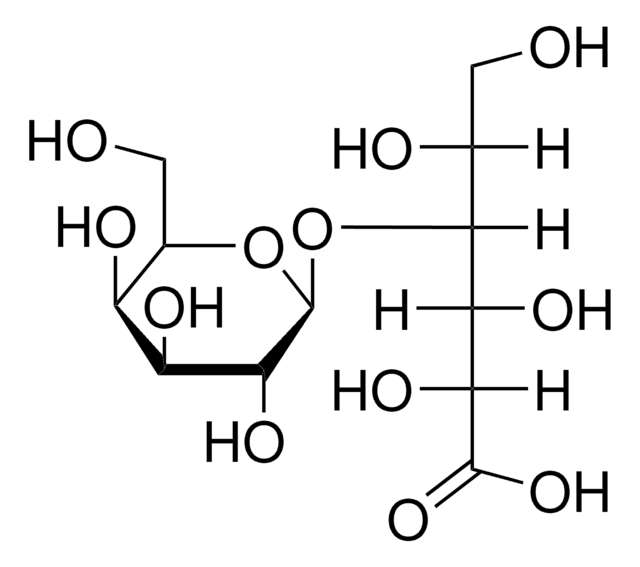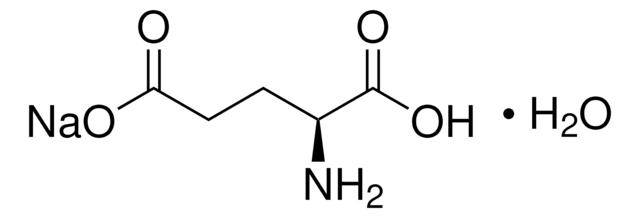81619
Ectoine
≥95.0% (HPLC)
Synonym(s):
(S)-2-Methyl-1,4,5,6-tetrahydropyrimidine-4-carboxylic acid, Thp(B)
About This Item
Recommended Products
Quality Level
Assay
≥95.0% (HPLC)
form
powder
mol wt
142.16 g/mol
storage condition
dry at room temperature
color
white
solubility
methanol: soluble 10 mg/mL, clear, colorless to almost colorless
SMILES string
CC1=N[C@@H](CCN1)C(O)=O
InChI
1S/C6H10N2O2/c1-4-7-3-2-5(8-4)6(9)10/h5H,2-3H2,1H3,(H,7,8)(H,9,10)/t5-/m0/s1
InChI key
WQXNXVUDBPYKBA-YFKPBYRVSA-N
Looking for similar products? Visit Product Comparison Guide
General description
Application
Biochem/physiol Actions
Other Notes
Storage Class Code
11 - Combustible Solids
WGK
WGK 1
Flash Point(F)
Not applicable
Flash Point(C)
Not applicable
Personal Protective Equipment
Regulatory Listings
Regulatory Listings are mainly provided for chemical products. Only limited information can be provided here for non-chemical products. No entry means none of the components are listed. It is the user’s obligation to ensure the safe and legal use of the product.
JAN Code
81619-1G-F:
81619-10G-F:
81619-100G-F:
81619-VAR-F:
81619-BULK-F:
Choose from one of the most recent versions:
Already Own This Product?
Find documentation for the products that you have recently purchased in the Document Library.
Customers Also Viewed
Our team of scientists has experience in all areas of research including Life Science, Material Science, Chemical Synthesis, Chromatography, Analytical and many others.
Contact Technical Service











